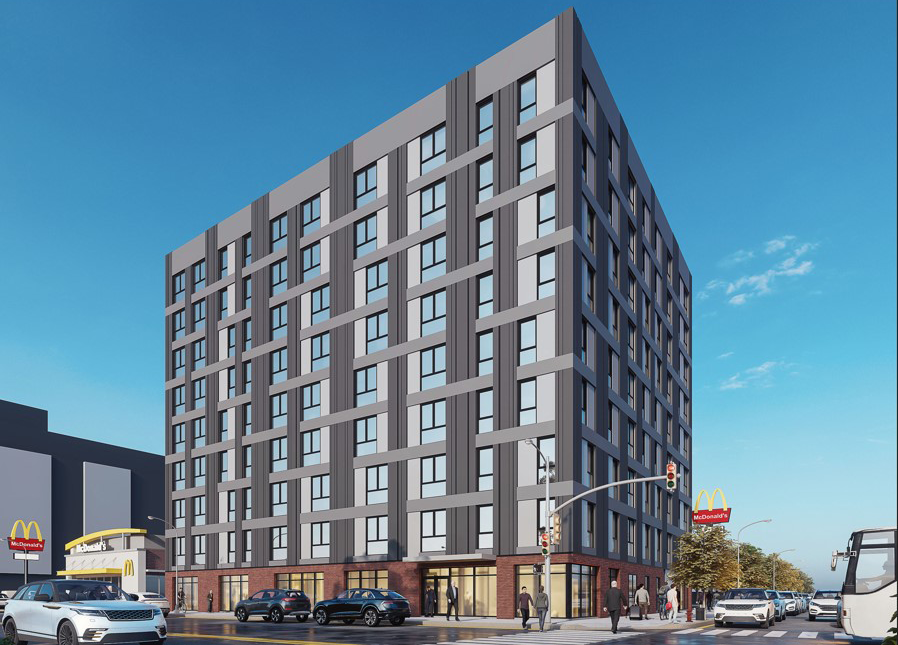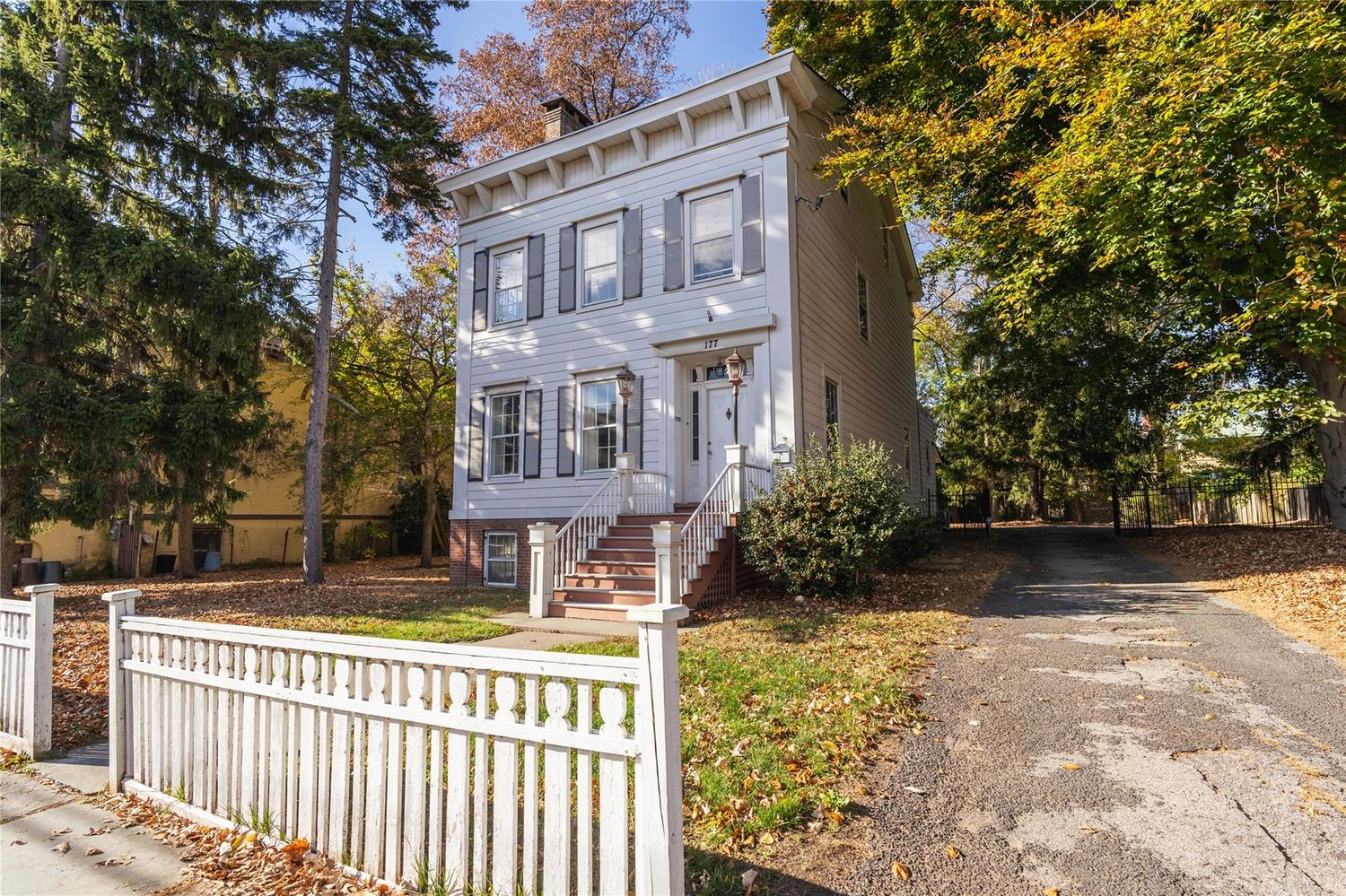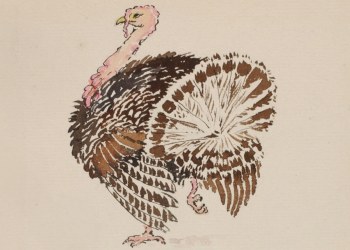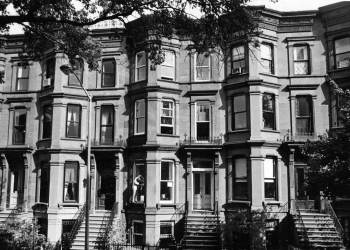Queenswalk: Calvary Cemetery
A trip from Brooklyn to Queens across that semi-movable parking lot known as the Brooklyn Queens Expressway will always take you over a vast expanse of the land of the dead, located right near the Kosciuszko Bridge. Although you can’t help but cynically think that those below are there from waiting in traffic jams up…

A trip from Brooklyn to Queens across that semi-movable parking lot known as the Brooklyn Queens Expressway will always take you over a vast expanse of the land of the dead, located right near the Kosciuszko Bridge. Although you can’t help but cynically think that those below are there from waiting in traffic jams up above, the fact of the matter is that you are sitting above the largest cemetery in the United States, with over three million burials. It’s also one of the oldest cemeteries, and buried its first permanent resident in 1848. She was named Esther Ennis, and she died, the records say, “of a broken heart.” This is Calvary Cemetery, run by the Trustees of St. Patrick’s Cathedral, and owned by the Catholic Archdiocese of New York.
The cemetery began, not by the order of the great cathedral on 5th Avenue, but at the first St. Patrick’s, now called Old St. Patrick’s, on Mott Street in Manhattan. By 1817, the cemetery around the church was reaching full capacity, and the parish knew they’d have to expand somewhere soon. A cholera epidemic in NYC in 1847 exacerbated a bad situation, but it also caused the New York Legislature to enact the Rural Cemetery Act, which authorized non-profit organizations to operate public cemeteries. In 1845, the Trustees of St. Patrick’s purchased the Alsop farm in Maspeth, including the family cemetery and 115 acres of land. This became First or “Old” Calvary Cemetery, and is located between the Long Island Expressway and Review Avenue.
The cemetery was consecrated by Bishop John Hughes in 1848. Back in Manhattan, the city was fast developing around Old St. Patrick’s, so much so that the bodies there were removed to Calvary in the 1850s. In the early days of the cemetery’s history, there were about 50 burials a day, half of which were for poor Irish children under the age of seven. It cost $7 to bury an adult at Calvary, $5 for children seven to fourteen, and $3 under the age of seven. Manhattanites traveled to Calvary from a ferry that crossed the East River at 23rd Street, and later, in 1857, another ferry that left from 10th Street.
In the cemetery’s first fifty years, almost 650,000 people were buried at Calvary. 200,000 more were buried between 1898 and 1907, due to the influenza pandemic that struck New York. So many people died during that time the grave diggers could not handle them all, and sometimes family members were called upon to dig their own loved one’s graves. By 1867, the original Calvary Cemetery was full. The archdiocese purchased more land and expanded into Second, Third and Fourth Cemeteries, all nearby, spreading across the neighborhoods of Maspeth and Woodside. The BQE rises over the Second Cemetery.
The Chapel at Calvary was designed by William Almirall, who designed the landmarked Emigrant Savings Bank headquarters in Lower Manhattan, as well as several library branches for the Brooklyn Public Library. He also designed St. Michael’s Catholic Church, in Sunset Park, which shares many design details with this chapel, most noticeably the beehive shaped domes, all inspired by the Sacré-Cœur Basilica in Paris, where he studied at the L’Ecole des Beaux-Arts. It was dedicated in 1908, and is considered one of the finest chapels in any American cemetery.
The second most visible and impressive building in the Cemetery is actually one of the monuments. It’s the Johnston family monument, the burial place of Charles, John and Robert Johnston and their families; Irish immigrants who made good in the United States. John Johnston founded a very successful dry goods store called the J.C. Johnston Department Store, which was housed in a grand emporium on 22nd Street between Broadway and Fifth Avenue. They were very successful in their sales of silk fabrics, at a time when other stores carrying the same goods were failing. They also had a partnership in Albany called Johnston & Riley.
The store made the family millionaires. Charles Johnson, who worked with his brother, died in 1880, and John died in 1887. He had been an active and generous member of St. Patrick’s, and a giving and philanthropic man. His funeral was a splendid affair, and he was interred in the $300,000 Johnston mausoleum, joining his brother. The family business was left to the youngest brother, Robert. For reasons not stated, Robert messed up big time, blowing the millions left to him in only a couple of years. Considering that five million dollars back in the late 19th century is the equivalent of $118 million today, Robert did some serious spending and bad investing, and probably a whole lot worse.
A year after his brother died, the store failed and was closed forever. Robert retired to the family manse on Mt. St. Vincent, on the Hudson. He lived there until the house was foreclosed on. A spectacular fire occurred right after that, and Robert barely escaped alive. He began living in the barn on the property, alone and refusing charity. Some friends found him there in the winter, shivering with pneumonia and insane. He died ten days later. He’s now buried in the huge family mausoleum, which had been paid for years ago. Hopefully, he and his brothers are resting in peace, in spite of everything. If I were John, I might have felt the need to come back and kick Robert’s casket a few times.
Unlike Green-Wood Cemetery or the Cemetery of the Evergreens, Calvary is not a beautiful park cemetery. There are no lush verdant lawns or pathways with hills and flowering trees and places of quiet contemplation for loved ones, or even tourists. This is a very crowded urban cemetery. Three million dead folks, more people than many American cities have walking above ground. With that many permanent guests, there are quite a few famous and infamous Catholic New Yorkers buried here.
These include many Civil War Medal of Honor recipients, almost all of Irish heritage, as well as athletes, politician, entertainers and mobsters. Many of St. Patrick’s and Catholic New York’s priests are buried here, as well. Al Smith, the colorful governor of New York is here, as is the Wagner political dynasty: Robert Ferdinand Wagner, Senator from NY; his son Robert F. Wagner, NYC mayor, and his son, Robert F. Wagner III, one time president of the NYC Board of Education. Charles Francis Murphy, one time head of Tammany Hall is buried here, as is Mayor Hugh J. Grant, and Carmine DeSapio, the last of the Tammany Hall politicians.
There are a lot of mobsters here too, many in unmarked graves. They include the Terranova brothers, members of the Morello crime family, active at the turn of the 20th century, their graves unmarked and forgotten. A lot of early 20th century mobsters are here, forgotten by all except mobster aficionados. Also Thomas Lucchese, Ignatius “Lupo the Wolf” Lupo, Natale “Joe Diamond” Natale, and Johnny Dolan, who was the mid-19th century head of the Irish Whyohs street gang, immortalized in Gangs of New York. The most famous fictional mobster of all time, Don Corleone, was buried here, in the movie “The Godfather.”
Today, Calvary Cemetery is amazingly still accepting new residents. But because of space, one can no longer reserve a plot. Most of the older and more ornate monuments are in Calvary One, as is the chapel and the original office. Unfortunately, time has not been kind to many of these monuments. Living under the BQE and the LIE, and the metropolitan area in general, means that pollution is everywhere. Acid rain and pollutants from the exhausts of millions of cars and trucks over the years have eroded the marble, erasing faces on angels and cherubs, and names from tombstones. The newer granite monuments have fared much better, and so have the very few brownstone monuments, relics of the cemetery’s earliest days. But unchecked, many of the older marble monuments will one day be dust. Sad, but rather appropriate, in a way. The cemetery is a fascinating place, and worthy of visiting.
A very detailed article about Calvary can be found on Kevin Walsh’s Forgotten NY blog. He’s got great photographs and histories of interesting people who are now living there. The above photograph is by Jim Henderson for Wikipedia. It shows the LIE rising behind part of the cemetery.
















Super article, MM.
fascinarting write-up Montrose, as always.
All of this history is new to me.
thank you.
Don’t forget the Newtown Pentacle’s myriad Calvary Cemetery works:
http://newtownpentacle.com/tag/calvary-cemetery/